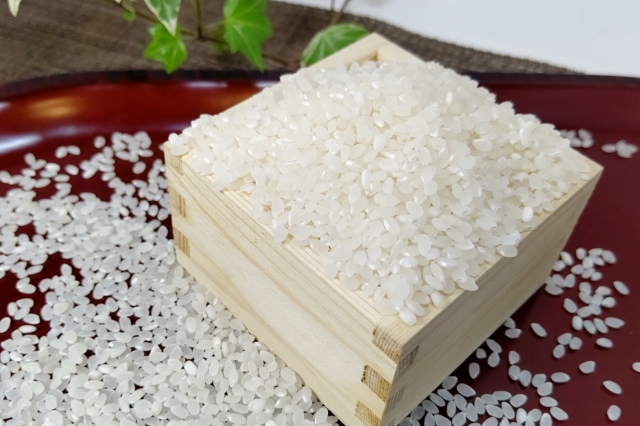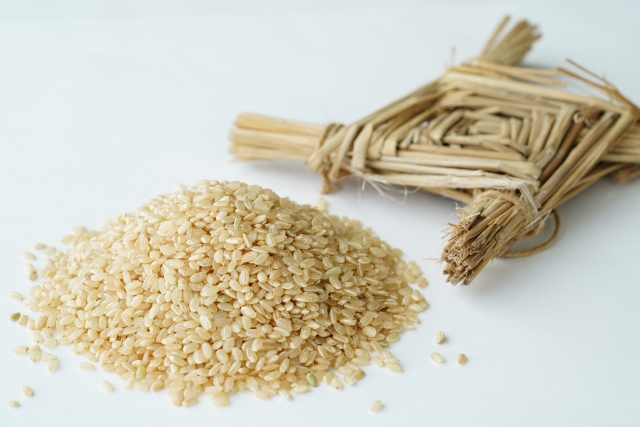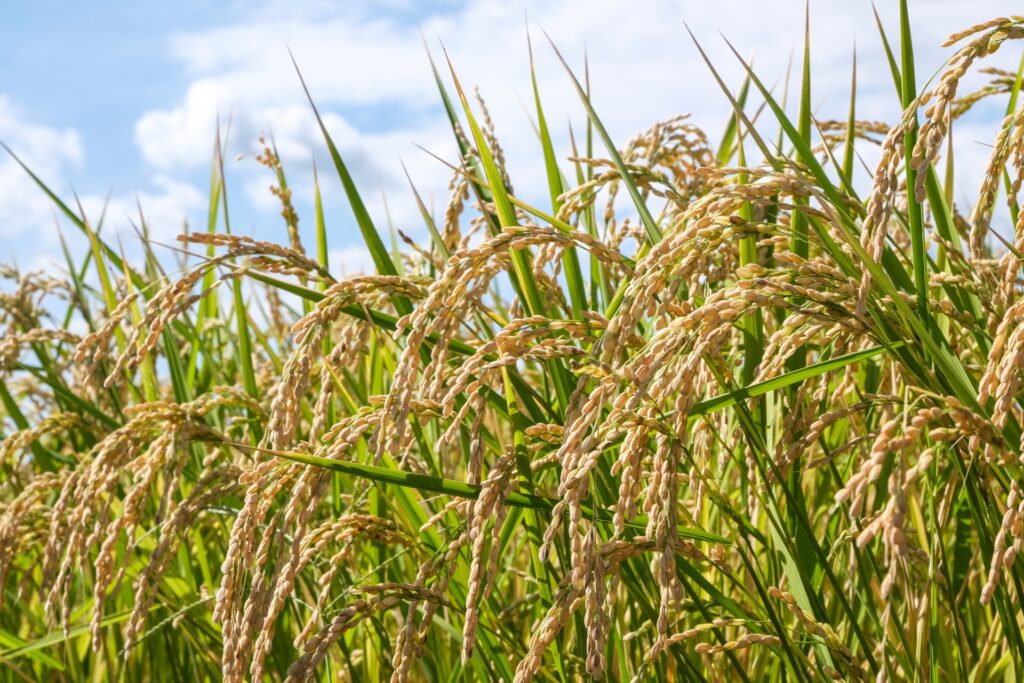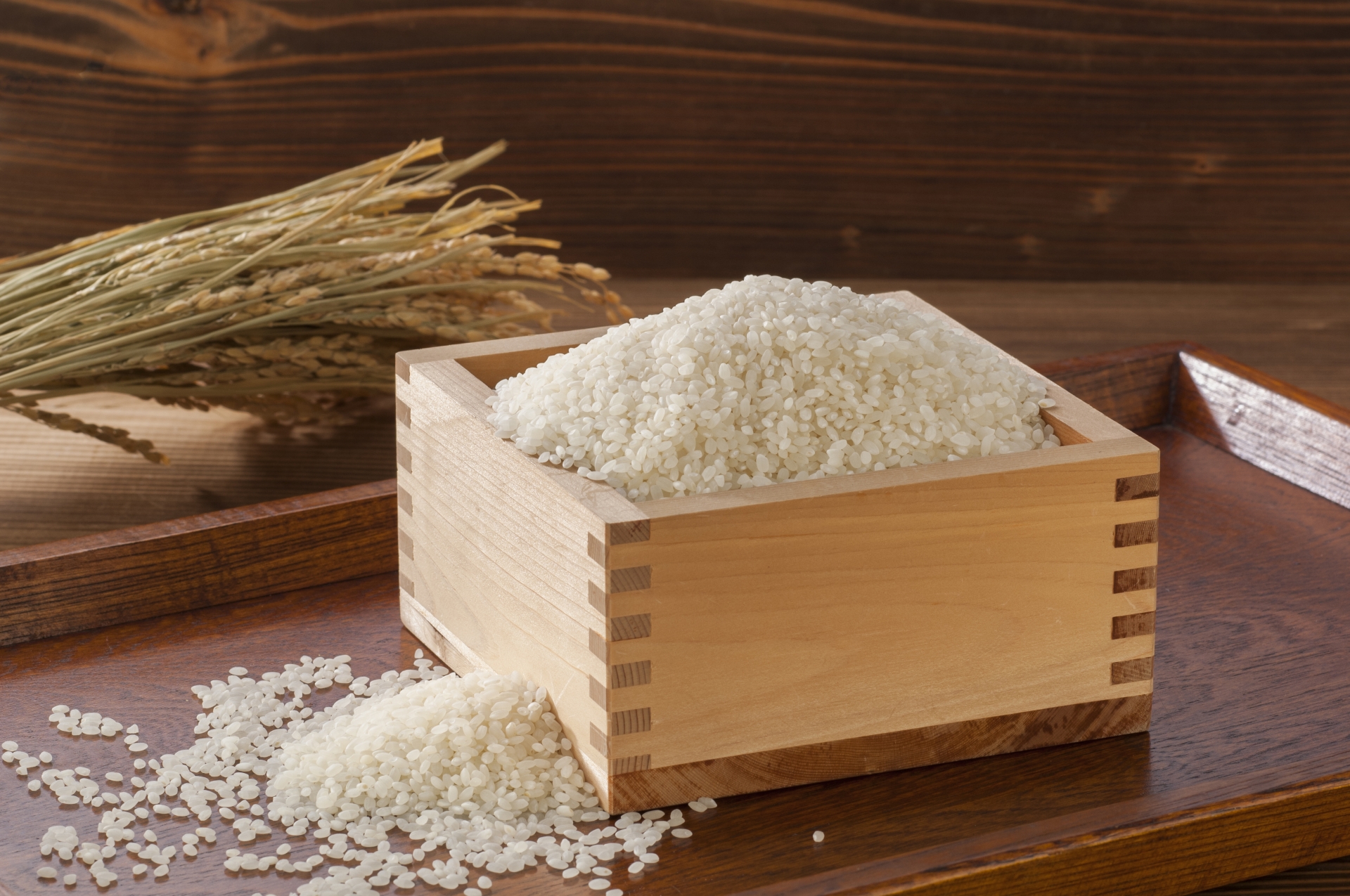Konnichiwa! As you may already know, rice (or gohan in Japanese) is an essential staple in our house, so I have learned a bit over the years about the various types of rice. Japan boasts an impressive array of rice varieties and it is interesting to know the differences in the varieties, how they are used, and where they are grown. I am happy to share what I have learned about the major types of Japanese rice!
Affiliate Disclaimer: I only recommend products I would use myself and all opinions expressed here are our own. This post may contain affiliate links that at no additional cost to you, I may earn a small commission. As an Amazon Associate I earn from qualifying purchases.
Recommended Rice You Can Buy Online
Below are my recommendations of rice you can buy online. All of these choices are a product of Japan. Most “Japanese” rice you buy in the U.S. is actually grown in California. If you really want the good stuff, though, it is worth it in my opinion to buy rice made in Japan. You can find Japanese grown rice at most Japanese or Asian markets. I know this is easy for me to find in Los Angeles, but probably more difficult for folks in other cities. Therefore, I put the following list together of top Japanese rice choices you can buy online.
Understanding the Difference: Japanese Rice vs. Other Types of Rice
Before we dive into the specific types, let’s address a common question: What sets Japanese rice apart from other rice varieties found around the world? The secret lies in the grain’s short to medium-length and high starch content. Japanese rice is stickier and has a soft, chewy texture when cooked, making it perfect for sushi and various rice dishes. It’s this unique combination of taste and texture that sets it apart from other rice types. Once you find just the right type Japanese rice for you, be sure to check out these Japanese rice cookers to ensure you cook your rice to perfection.
Now, let’s take a closer look at some of the most popular types of Japanese rice, shall we?

Planning a trip to Japan?
1. Japonica Rice (Uruchimai): Best All-Around Type of Japanese Rice
Uruchimai, commonly known as Japonica rice, is the best all-rounder when it comes to Japanese rice. This variety encompasses a wide range of short and medium-grain rice types, and it’s the most commonly grown and consumed rice in Japan. When cooked, Japonica rice becomes sticky, which is ideal for creating delicious rice bowls, onigiri (rice balls), and donburi (rice bowls with toppings).
The plump and tender grains of Japonica rice can be found in every Japanese household, and it serves as the foundation for many traditional dishes. Its versatility, combined with its comforting taste, makes it the go-to choice for everyday meals.
This is the most commonly grown and consumed type of Japanese rice and is cultivated throughout the country. However, certain regions, such as Niigata, Hokkaido, and Yamagata, are renowned for producing some of the finest Japonica rice due to their favorable climate and fertile soils.

2. Koshihikari: The Premium Type of Japanese Rice
If there’s one type of Japanese rice that reigns supreme, it’s Koshihikari. Considered the creme de la creme of Japanese rice varieties, Koshihikari is renowned for its exceptional taste, sweet aroma, and delicate, fluffy texture. Cultivated with meticulous care, this premium rice is often used in high-end restaurants and special occasions.
Koshihikari’s distinct flavor and texture are attributed to its cultivation in specific regions with nutrient-rich soil and pure water. If you’re looking to treat yourself or impress your guests, Koshihikari is the way to go.
This premium rice variety is mainly cultivated in specific regions known for their high-quality rice production. Niigata, Toyama, and Fukui prefectures are particularly famous for their Koshihikari rice, benefiting from the cold, snowy winters and well-drained soil.

3. Genmai (Brown Rice): The Healthiest Type of Japanese Rice
For health-conscious rice lovers, Genmai, also known as brown rice, takes the spotlight. Unlike the polished white rice, Genmai retains its bran layer, making it a whole grain packed with essential nutrients like fiber, vitamins, and minerals. The bran layer also adds a nutty flavor and slightly chewy texture to the rice.
Due to its superior nutritional profile, Genmai is considered a healthier option, promoting better digestion and providing a slower release of energy. Although it takes a bit longer to cook than white rice, its wholesome benefits make it a worthy addition to any balanced diet.

4. Sasanishiki: The Popular All-Purpose Type of Japanese Rice
As one of the most popular all-purpose rice varieties, Sasanishiki appeals to a wide range of tastes. It shares many characteristics with Koshihikari, boasting a pleasant balance of sweetness and umami. Sasanishiki is highly versatile and can be used for a myriad of dishes, from traditional Japanese cuisine to Western-inspired rice-based creations.
Whether you’re preparing a hearty curry, onigiri, or a simple rice bowl topped with fresh vegetables, Sasanishiki will always deliver a satisfying and delightful experience. Speaking of onigiri, if you want perfectly shaped onigiri, check out our recommended onigiri mold.
This variety is grown in various regions, including Yamagata, Akita, and Miyagi prefectures. It is known for its balance of sweetness and umami and is appreciated for its versatility in traditional Japanese dishes.
5. Omusubi, Sushi Rice: The Star of Sushi
Ah, sushi! The culinary delight that has taken the world by storm. Behind every fantastic sushi roll lies a star ingredient: sushi rice. Known as “Omusubi” in Japan, sushi rice is typically short-grain Japonica rice seasoned with rice vinegar, sugar, and salt. This combination gives it the distinctive tangy-sweet flavor that perfectly complements the fresh fish and other toppings used in sushi.
The stickiness of sushi rice is essential for creating those perfectly rolled sushi pieces we all love. So, the next time you enjoy sushi, take a moment to appreciate the masterful art of sushi rice preparation.
And that is everything there is to…
Wait! What About Sake Rice?
Ah, yes, we can’t forget about sake rice. Sake, the traditional Japanese rice wine, uses a specific type of Japanese rice known as “sakamai” or “shuzo kotekimai,” which is specifically cultivated for sake production. Sakamai is different from the rice varieties used for everyday consumption and is selected for its unique characteristics that contribute to the brewing process and the final flavor profile of sake.
The rice used in sake production has distinct attributes, such as a larger starch content and larger grains with a higher density. This combination of starch and density allows the rice to be polished to a precise degree, removing the outer layers while leaving the inner core intact. The degree of polishing, known as the “seimaibuai,” is crucial in sake brewing, as it determines the sake’s quality and category.
Some of the popular sakamai rice varieties used in sake production include:
The choice of sakamai rice and the brewing techniques used by each sake brewery contribute to the diverse range of sake available, each with its own distinct flavors, aromas, and characteristics. The art of sake-making, honed over centuries, continues to be an integral part of Japanese culture and an evolving craft cherished both locally and globally.

What are the most popular rice brands in Japan?
Here are some of the well-known rice brands in Japan:

Summing It Up
In conclusion, the diverse world of types of Japanese rice offers an array of tastes, textures, and applications. From the ever-versatile Japonica rice to the exquisite Koshihikari and the wholesome goodness of Genmai, each variety has its unique appeal. Whether you’re seeking a comforting bowl of rice or aiming to elevate your culinary skills with sushi-making, or wanting to make sake, there’s a Japanese rice type that’s perfect for you.
So, go ahead, expand your rice palate, and savor the richness of Japanese rice in all its glory. Types of Japanese rice are sure to add an extra layer of joy to your dining experience. Remember, rice is life, and life is rice! Happy eating!
Other FAQs about Japanese Rice
Can I use Japanese rice for dishes other than Japanese cuisine?
Absolutely! While Japanese rice is a staple in traditional Japanese dishes, its versatility allows it to be used in various culinary creations. Whether you’re making risotto, rice pudding, or even a rice-based salad, Japanese rice can adapt and provide a delightful experience.
Does the cooking method vary for different types of Japanese rice?
The cooking method can vary slightly between different types of Japanese rice due to variations in grain length and starch content. Generally, short-grain rice requires slightly less water and a shorter cooking time compared to long-grain rice. It’s essential to follow the cooking instructions on the rice package or use a rice cooker for consistent results. Check out my recommendations of the best Japanese rice cookers here.
Can I mix different types of Japanese rice?
Yes, you can mix different types of Japanese rice! Mixing different varieties can create interesting textures and flavors. For example, blending Koshihikari with a slightly less sticky rice like Sasanishiki can give your dishes a unique twist. Experimenting with rice blends can be a fun culinary adventure.
Is it necessary to wash Japanese rice before cooking?
Yes, washing Japanese rice before cooking is a common practice. Rinsing the rice helps remove excess starch and any impurities, resulting in fluffier and more evenly cooked rice. To wash the rice, place it in a bowl, add water, and gently stir it with your fingers. Then, drain the water and repeat the process until the water runs clear.
Can I store different types of Japanese rice for an extended period?
Properly stored, Japanese rice can have a long shelf life. It is best to store rice in an airtight container in a cool, dry place, away from direct sunlight. While white rice can last for up to several years, brown rice has a shorter shelf life due to its bran layer. Be sure to check the packaging for specific storage instructions for each rice type.
Disclaimer: If you use the link on this page to purchase travel insurance, we will receive a fee from Freely, a brand of Cover-More Insurance Services Pty Limited ABN 95 003 114 145 (AFSL 241713) (Cover- More). We do not act for Cover-More or Freely. The information provided is only on the availability of Freely products. We do not give advice & the information provided is not intended to give an opinion or recommendation regarding the product. For information on how to contact Cover-More or Freely refer to the PDS, FSG & TMD which can be found on the Freely website.



